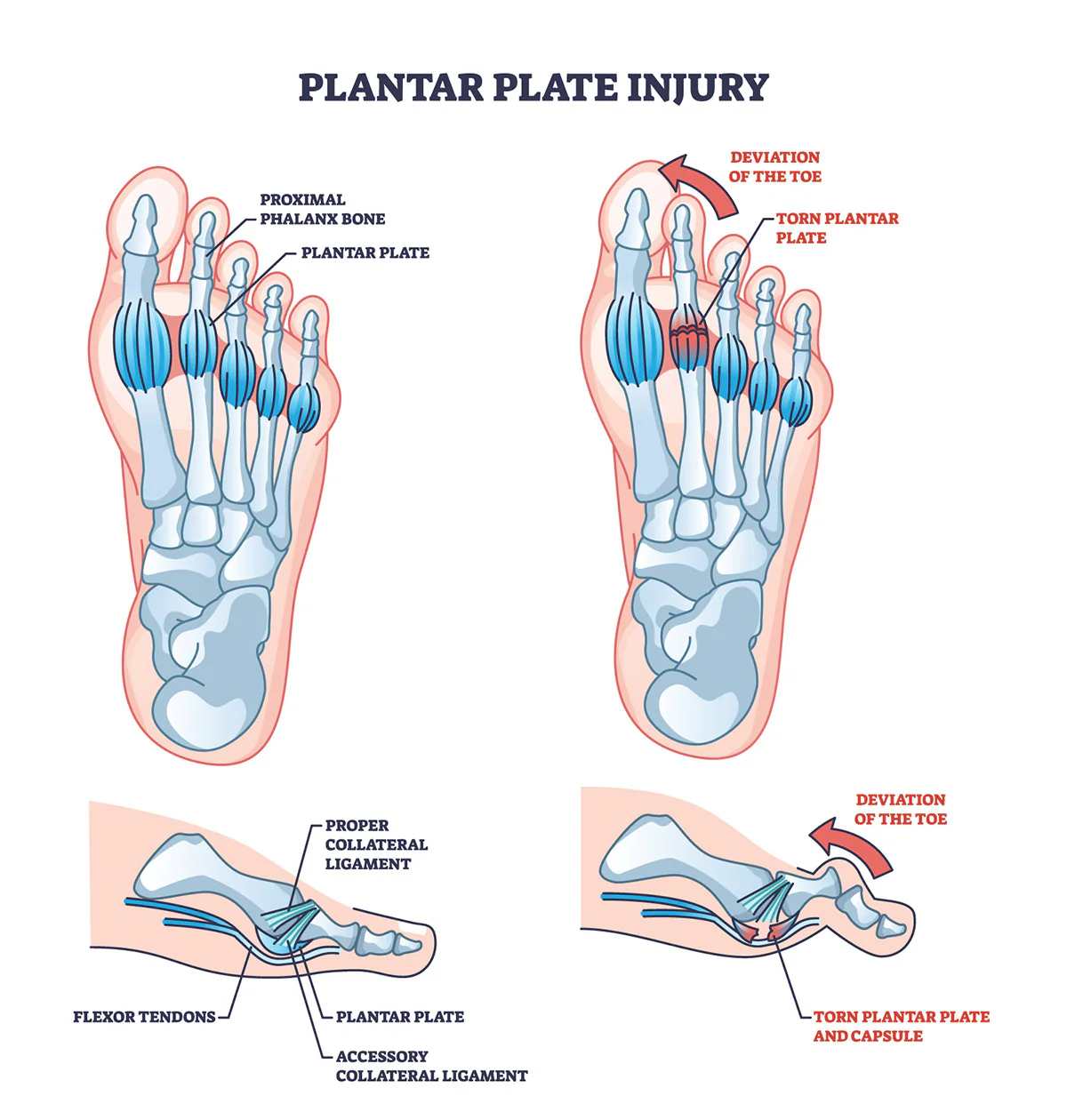Plantar Plate Tear Symptoms & Treatment
What Is The Plantar Plate?

Table of Contents
How Does A Plantar Plate Tear?
- Over-pronation (excessive inward rolling of the feet)
- The presence of a bunion or hammer toe
- A long second metatarsal bone
- Activities that place high pressure on the ball of the foot, such as dancing, running, or climbing stairs
Symptoms Of A Plantar Plate Tear
Visit Us Today
Hope Island
Phone: 07 5510 9222
Located within Hope Island Marketplace Medical & Skin Clinic, 99-103 Broadwater Ave Hope Island QLD 4212
Jimboomba
Phone: 07 5546 9766
Located Within Jimboomba Medical Centre, Unit 1/69 Cerina Cct, Jimboomba QLD 4280
Beenleigh
Phone: 07 3287 2224
Located Within Beenleigh Mall Medical Centre, Shop24A, 40/68 Main Street, Beenleigh QLD 4207
Eagleby
Phone: 07 2889 1666
Located Within Eagleby Family Practice, 5/120 River Hills Rd, Eagleby QLD 4207
Harristown
Phone: 07 4635 6111
Located Within Toowoomba Medical Centre, 146 Drayton Road, Harristown QLD 4350
Marsden
Phone: 07 3067 2370
Located Within Marsden Family Doctors, Shop 28/55-77 Chambers Flat Rd, Marsden QLD 4132
Keperra
Phone: 07 3355 4082
Located Within Keperra Medical Clinic, 14 Dallas Parade Keperra QLD 4054
Coomera
Phone: 07 5573 5663
Located Within Doctors @ Coomera Central, Shop 6, 21 Coomera Grand Drive, Upper Coomera, QLD 4209
Newtown
Phone: 07 4633 8700
Located Within Ochre Medical Centre Wyalla, Shop 20, 238 Taylor Street, Newtown QLD 4350
Management Of A Plantar Plate Tear
Diagnosing a plantar plate tear can be challenging due to the complexity of the foot’s anatomy. This is why consulting an experienced podiatrist is essential. Plantar plate tears can range in severity from mild to a complete rupture. To accurately determine the extent of the injury, medical imaging may be used, allowing for the development of the most appropriate treatment plan.
Treatment Of A Plantar Plate Tear
- Strapping the toes
- Padding to offload the affected area
- Temporarily modifying your footwear
- Avoiding activities that worsen the pain
- Using anti-inflammatory medications
After addressing the immediate pain, treatment will focus on any underlying factors, such as flat feet, bunions, or hammer toes. Your podiatrist will conduct a thorough assessment to determine the best way to reduce pressure on the forefoot and minimize stress on the injured area.
Plantar plate issues often develop gradually and are most effectively treated in the early stages. In many cases, using a custom soft full-length orthotic and wearing appropriate footwear can help prevent the condition from worsening.
In rare cases, surgery may be necessary to repair the plantar plate. For chronic cases, a resection osteotomy may be recommended as a treatment option.
Expected Outcome
Our podiatrists are experts in treating plantar plate tears. Book an appointment today for professional care.
Plantar Plate FAQ's
Do bunions cause plantar plate tears?
Bunions are one of the contributing factors to plantar plate tears. They increase pressure on the plantar plate, which can lead to the ligament thinning and stretching, sometimes causing dislocation.
How do you tear your plantar plate?
Over-pronating (rolling your feet inward), bunions, hammertoes, and activities that place excessive pressure on the balls of your feet (such as running, dancing, or climbing stairs) can all contribute to the tearing of the plantar plate.
How long does a plantar plate tear take to heal?
Recovering from a plantar plate tear can take time, but most patients report being pain-free within 3-4 months after the plantar plate is restored.
Is it okay to walk on a plantar plate tear?
Depending on the severity of the tear, your podiatrist may recommend avoiding walking barefoot to prevent further aggravating the injury.
Enquire Now
Not The Condition You Are Looking For?
Find out more about the conditions we treat by clicking below.
